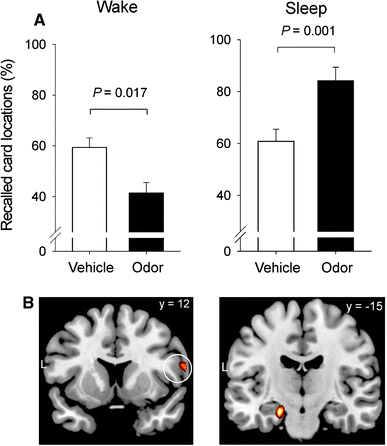System consolidation of memory during sleep
- PMID: 21541757
- PMCID: PMC3278619
- DOI: 10.1007/s00426-011-0335-6
System consolidation of memory during sleep
Abstract
Over the past two decades, research has accumulated compelling evidence that sleep supports the formation of long-term memory. The standard two-stage memory model that has been originally elaborated for declarative memory assumes that new memories are transiently encoded into a temporary store (represented by the hippocampus in the declarative memory system) before they are gradually transferred into a long-term store (mainly represented by the neocortex), or are forgotten. Based on this model, we propose that sleep, as an offline mode of brain processing, serves the 'active system consolidation' of memory, i.e. the process in which newly encoded memory representations become redistributed to other neuron networks serving as long-term store. System consolidation takes place during slow-wave sleep (SWS) rather than rapid eye movement (REM) sleep. The concept of active system consolidation during sleep implicates that (a) memories are reactivated during sleep to be consolidated, (b) the consolidation process during sleep is selective inasmuch as it does not enhance every memory, and (c) memories, when transferred to the long-term store undergo qualitative changes. Experimental evidence for these three central implications is provided: It has been shown that reactivation of memories during SWS plays a causal role for consolidation, that sleep and specifically SWS consolidates preferentially memories with relevance for future plans, and that sleep produces qualitative changes in memory representations such that the extraction of explicit and conscious knowledge from implicitly learned materials is facilitated.
Figures




References
-
- Carpenter GA, Grossberg S. The ART of adaptive pattern recognition by a self-organizing neural network. Computer. 1988;21:77–88. doi: 10.1109/2.33. - DOI
-
- Cohen JD, O’Reilly RC. A preliminary theory of the interactions between prefrontal cortex and hippocampus that contribute to planning and prospective memory. In: Brandimonte M, Einstein GO, McDaniel MA, editors. Prospective memory: theory and applications. Mahwah: Erlbaum; 1996. pp. 267–295.
Publication types
MeSH terms
LinkOut - more resources
Full Text Sources
Other Literature Sources
Medical
Miscellaneous

